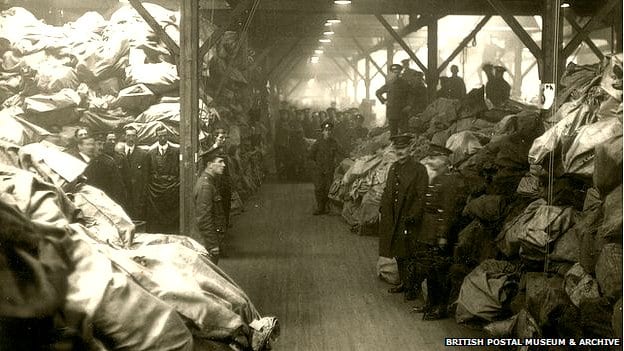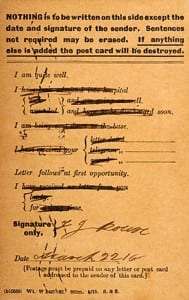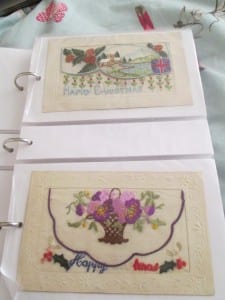The Post Office was a crucial part of Britain’s communications and war effort during the Great War (The British Postal Museum and Archive, 2014). The Post Office were not only responsible for the communications on the Front Line but also between the Front Line and home. At the London Home Depot there were 2,500 women employees alone to sort through letters and parcels and over the first two years of the war, 35,000 women were drafted in to work for the Post Office. 12.5 million letters were sent every week and a total of 2 billion letters and 114 million parcels were sent during the war.
We have taken a great interest in letters for our performance hence our title ‘Sincerely Yours’ After visiting the Museum of Lincolnshire Life and finding many letters from Billy Lounds, we were intrigued to see whether we could find any others. With a trip to the Lincolnshire Archives, Ellie, Charlotte and Louise encountered another lot of letters from Private Harry Butt. We started to compile the letters that we had found and after reading many of them we realised that there were several references to the local area of Lincoln. I’ll also admit that a fair few of us have fallen in love with either Harry or Billy or both!
As lovely as it was to read these letters and the significance of these letters, it dawned on us that we were reading personal, private letters. It is a sensitive subject to explore, all these letters to the men’s sweethearts and mothers so we must be careful with how we use them. As well as actual letters there were many other forms of letters that we found such as telegrams, field postcards and also beautifully detailed silk postcards.
We are possibly going to use some of these letters we have found within out final piece as we have been conducting several experiments with what we could do for example. We responded as Dora to a letter from Billy. It was a good exercise as, although we are not trying to be these women, it helped us think about the possible emotions and thoughts these would have had when receiving these letters. We have now taken inspiration from the silk postcards to create our flyers for the performance. We are creating our own design in a similar style to the postcards we have seen and will convey our piece to its receiver.
Works Cited:
BBC (2014) World War One: How did 12 million letters a week reach soldiers? [online] London: BBC. Available from: http://www.bbc.co.uk/news/magazine-25934407 [Accessed 15th March 2014]
BBC (2014) iWonder World War One: How did 12 million letters a week reach soldiers? [online] London:BBC. Available from: http://www.bbc.co.uk/guides/zqtmyrd [Accessed 15th March 2014]
The British Postal Museum & Archive (2014) The Post Office and the First World War [online] Available from: http://www.postalheritage.org.uk/page/firstworldwar [Accessed 15th March 2014]
The British Postal Museum & Archive (2014) The Post Office At War [online] Available from: http://www.postalheritage.org.uk/page/peoplespost-war [Accessed 15th March 2014]


